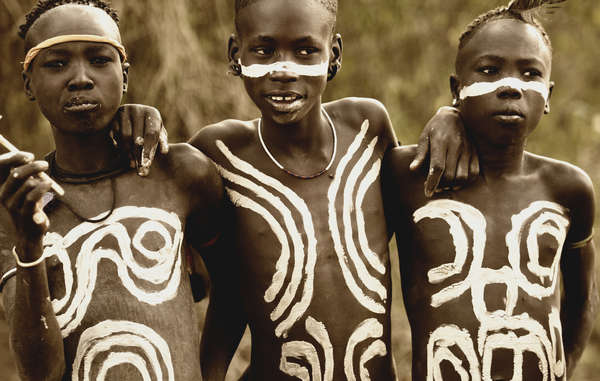The Lower Omo River in south west Ethiopia is home to eight different tribes whose population is about 200,000.
They have lived there for centuries.
However the future of these tribes lies in the balance. A massive hydro-electric dam, Gibe III, is under construction on the Omo.
In March 2011, the Ethiopian government withdrew its request for aid credit from the Italian government. The request had raised great concern amongst many Italian NGOs, which urged the Italian Foreign Minister not to support the controversial dam.
Survival and various regional and international organizations believe that the Gibe III Dam will have catastrophic consequences for the tribes of the Omo River, who already live close to the margins of life in this dry and challenging area.
Gibe III dam
In July 2006 the Ethiopian government signed a contract with the Italian company Salini Costruttori to build Gibe III, the biggest hydro-electric dam in the country. In violation of Ethiopia’s laws, there was no competitive bidding for the contract.
Work started in 2006 with a budget of 1.4 billion euros. Half of the dam has already been built and costs are escalating.
The dam will block the south western part of the Omo River which runs for 760 kms from the highlands of Ethiopia to Lake Turkana in Kenya. The Lower Omo Valley is a UNESCOWorld Heritage site, in recognition of its archaeological and geological importance. Here the Omo flows through the Mago and Omo National Parks, home to several tribes.
Ethiopian environmental law stipulates that an environmental and social impact assessment (ESIA) must be carried out before any project is approved. Despite this, the Ethiopian Environmental Protection Agency (EPA) approved the ESIA retrospectively, in July 2008, two years after construction work started.
The ESIA was carried out by an Italian company, CESI, and paid for by EEPCo (Ethiopian Electric Power Corporation) and Salini, raising questions over its independence and credibility. Its report, published in January 2009, found in favor of the project, stating that the impact on the environment and tribes concerned will be ‘negligible’ and even ‘positive’.

During dry periods the Nyangatom dig deep into the land in order to extract water. Kibish river bed, Ethiopia.
© Serge Tornay/Survival
According to independent experts, the dam, plantations and irrigation canals will have an enormous impact on the delicate ecosystem of the region by altering the seasonal flooding of the Omo and dramatically reducing its downstream volume. This will result in the drying out of much of the riverine zone and will eliminate the riparian forest. Indigenous people such as the Kwegu who rely almost exclusively on fishing and hunting will be destitute.
If the natural flood with its rich silt deposits disappears, subsistence economies will collapse with at least 100,000 tribal people facing food shortages. The potential for inter-ethnic conflict will increase as people compete for scarce and dwindling resources.


Nessun commento:
Posta un commento